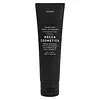Mecca Cosmetica Off Duty Serum Skin Tint Versus Mecca Cosmetica To Save Face SPF50+ Superscreen Oxybenzone Free Formula
What's inside
What's inside
 Key Ingredients
Key Ingredients

 Benefits
Benefits

 Concerns
Concerns

 Ingredients Side-by-side
Ingredients Side-by-side

Water
Skin ConditioningIsoamyl Laurate
EmollientSqualane
EmollientUndecane
EmollientPolyglyceryl-3 Diisostearate
EmulsifyingTridecane
PerfumingPropanediol
SolventPolyglyceryl-6 Polyricinoleate
EmulsifyingPentylene Glycol
Skin ConditioningMagnesium Sulfate
Glycerin
HumectantDisteardimonium Hectorite
StabilisingPhenoxyethanol
PreservativePolyglyceryl-2 Isostearate
EmulsifyingAluminum Hydroxide
EmollientHonokiol
AntioxidantEthylhexylglycerin
Skin ConditioningTocopheryl Acetate
AntioxidantNiacinamide
SmoothingEthylhexyl Palmitate
EmollientGlycolipids
Skin ConditioningTocopherol
AntioxidantTrihydroxystearin
Skin ConditioningSodium Hyaluronate
HumectantGlucomannan
Skin ConditioningCI 77891
Cosmetic ColorantIron Oxides
Water, Isoamyl Laurate, Squalane, Undecane, Polyglyceryl-3 Diisostearate, Tridecane, Propanediol, Polyglyceryl-6 Polyricinoleate, Pentylene Glycol, Magnesium Sulfate, Glycerin, Disteardimonium Hectorite, Phenoxyethanol, Polyglyceryl-2 Isostearate, Aluminum Hydroxide, Honokiol, Ethylhexylglycerin, Tocopheryl Acetate, Niacinamide, Ethylhexyl Palmitate, Glycolipids, Tocopherol, Trihydroxystearin, Sodium Hyaluronate, Glucomannan, CI 77891, Iron Oxides
Octocrylene
UV AbsorberButyl Methoxydibenzoylmethane
UV AbsorberBis-Ethylhexyloxyphenol Methoxyphenyl Triazine
Skin ConditioningPhenylbenzimidazole Sulfonic Acid
UV AbsorberC12-15 Alkyl Benzoate
AntimicrobialCarbomer
Emulsion StabilisingCetearyl Alcohol
EmollientDisodium EDTA
Tocopheryl Acetate
AntioxidantEthylhexylglycerin
Skin ConditioningParfum
MaskingGlycerin
HumectantGlyceryl Stearate
EmollientIodopropynyl Butylcarbamate
PreservativePhenoxyethanol
PreservativePinus Pinaster Callus Powder
Skin ConditioningPonceau Sx
Potassium Cetyl Phosphate
EmulsifyingWater
Skin ConditioningSodium Hydroxide
BufferingSodium PCA
HumectantSorbitan Stearate
EmulsifyingOctocrylene, Butyl Methoxydibenzoylmethane, Bis-Ethylhexyloxyphenol Methoxyphenyl Triazine, Phenylbenzimidazole Sulfonic Acid, C12-15 Alkyl Benzoate, Carbomer, Cetearyl Alcohol, Disodium EDTA, Tocopheryl Acetate, Ethylhexylglycerin, Parfum, Glycerin, Glyceryl Stearate, Iodopropynyl Butylcarbamate, Phenoxyethanol, Pinus Pinaster Callus Powder, Ponceau Sx, Potassium Cetyl Phosphate, Water, Sodium Hydroxide, Sodium PCA, Sorbitan Stearate
 Reviews
Reviews

Ingredients Explained
These ingredients are found in both products.
Ingredients higher up in an ingredient list are typically present in a larger amount.
Ethylhexylglycerin (we can't pronounce this either) is commonly used as a preservative and skin softener. It is derived from glyceryl.
You might see Ethylhexylglycerin often paired with other preservatives such as phenoxyethanol. Ethylhexylglycerin has been found to increase the effectiveness of these other preservatives.
Glycerin is already naturally found in your skin. It helps moisturize and protect your skin.
A study from 2016 found glycerin to be more effective as a humectant than AHAs and hyaluronic acid.
As a humectant, it helps the skin stay hydrated by pulling moisture to your skin. The low molecular weight of glycerin allows it to pull moisture into the deeper layers of your skin.
Hydrated skin improves your skin barrier; Your skin barrier helps protect against irritants and bacteria.
Glycerin has also been found to have antimicrobial and antiviral properties. Due to these properties, glycerin is often used in wound and burn treatments.
In cosmetics, glycerin is usually derived from plants such as soybean or palm. However, it can also be sourced from animals, such as tallow or animal fat.
This ingredient is organic, colorless, odorless, and non-toxic.
Glycerin is the name for this ingredient in American English. British English uses Glycerol/Glycerine.
Learn more about GlycerinPhenoxyethanol is a preservative that has germicide, antimicrobial, and aromatic properties. Studies show that phenoxyethanol can prevent microbial growth. By itself, it has a scent that is similar to that of a rose.
It's often used in formulations along with Caprylyl Glycol to preserve the shelf life of products.
Tocopheryl Acetate is AKA Vitamin E. It is an antioxidant and protects your skin from free radicals. Free radicals damage the skin by breaking down collagen.
One study found using Tocopheryl Acetate with Vitamin C decreased the number of sunburned cells.
Tocopheryl Acetate is commonly found in both skincare and dietary supplements.
Learn more about Tocopheryl AcetateWater. It's the most common cosmetic ingredient of all. You'll usually see it at the top of ingredient lists, meaning that it makes up the largest part of the product.
So why is it so popular? Water most often acts as a solvent - this means that it helps dissolve other ingredients into the formulation.
You'll also recognize water as that liquid we all need to stay alive. If you see this, drink a glass of water. Stay hydrated!
Learn more about Water